How to Design Your Living Room?

The living room is often considered the heart of the home, where friends and family come together to relax and socialize. This is why it is important to make sure that your living room is not only functional but also aesthetically pleasing.
Designing a living room can be an exciting and rewarding process, but it can also be overwhelming without a clear plan. A well-designed living room should not only look beautiful but also be functional and comfortable. With careful consideration and planning, you can create a space that reflects your personal style and meets your needs.
Read on to learn how to do this.
Tips for Designing Your Living Room
The process of designing a living room involves several steps, starting with determining your needs and measuring the space. Once you have a clear understanding of your requirements and the size of the room, you can begin to create a floor plan and choose a colour scheme that complements the mood you want to create in the room. Here’s how you can do it.
Determine Your Needs
First and foremost, you need to consider how you will be using the living room. Will it be a space for entertainment, relaxation, or both? Do you need a space for a home office, a reading nook, or a play area for children? Understanding your needs will help guide your design decisions and ensure that the living room meets your requirements.
Measure the Space
Measure the living room to determine the size of furniture and decor items that will fit comfortably in the space. Measure the length and width of the room and any alcoves, doorways, or windows. Be mindful of the ceiling height, as this will affect the size of lighting fixtures and artwork.
Create a Floor Plan
Use a tool like a floor plan app or paper and pencil to create a layout for the room. Consider the flow of traffic, the placement of windows and doors, and the location of electrical outlets and light switches. Determine the focal point of the room and arrange the furniture around it. A floor plan will help you visualize the design of the room and ensure that the furniture and decor items fit comfortably in the space.
Choose a Colour Scheme
Choose a colour scheme that reflects your personal style and complements the mood you want to create in the room. Consider the natural light in the space and the colours of any existing furniture or decor items. A neutral colour palette can create a calming atmosphere, while bold colours can add energy and excitement to the room. Consider the colour scheme you've chosen and add pops of colour through throw pillows, rugs, curtains, or artwork. Be mindful of the balance of colours in the room, and avoid overwhelming the space with too many bold hues.
Select Furniture
Choose furniture that is both functional and stylish. Consider the size and layout of the room when selecting furniture, and choose pieces that fit the scale of the space. Be mindful of the materials, textures, and patterns to create a cohesive look. Choose a mix of comfortable seating options, such as a sofa, chairs, and ottomans.
Add Rugs
Not only do rugs do a great job of completing the look of the living room, but they also provide practical benefits. For instance, rugs can help to absorb sound and reduce echo in a room, which can be especially important in larger or open-plan spaces that tend to be noisy. This can create a more peaceful and relaxing environment, which is especially important if you tend to spend more time in the living room. If you’re looking for living room rugs, consider heading over to The Rugs for high-quality rugs for sale today.
Add Decor
Add decor items that reflect your personal style and enhance the overall design of the room. Consider using a mix of textures, patterns, and colours to create visual interest. Be mindful of clutter and avoid overcrowding the space with too many accessories. Choose decor items that serve a purpose, such as a decorative tray or vase.

Mix and Match Colours and Patterns
Mixing and matching patterns and textures can add visual interest to a living room. Choose fabrics and textiles that complement each other, such as pairing a bright sofa with grey rugs or geometric throw pillows with floral armchairs. Be mindful of the scale and proportion of the patterns and textures to create a cohesive look.
Use Lighting
Lighting can make a big difference in how a room feels. Use a combination of table lambs, floor lamps and overhead lighting to create a warm and inviting ambience. Consider the activities that will take place in the living room and use lighting to create the appropriate mood, such as using dimmer switches to create a relaxing atmosphere for movie nights.

Add Personal Touches
Adding personal touches to a living room can make it feel like home. Display family photos, artwork, or unique decor items that reflect your personality and style. Be mindful of clutter and avoid overcrowding the space with too many accessories. Choose items that have meaning or bring you joy to create a space that feels personal and welcoming.
Add Finishing Touches
Add finishing touches, such as artwork, rugs, and throw pillows, to tie the design of the room together. Be mindful of the balance of colours, textures, and patterns to create a cohesive look. Choose artwork and decor items that complement the overall design of the room.
Conclusion
Designing a living room requires a combination of creativity, planning, and attention to detail. With these elements in mind, you can create a beautiful and functional living room that meets your needs and reflects your personal style.
How to Interior Design Your Living Room: Creating a Stylish and Functional Space
Transform your living room into a stylish and functional space with these interior design tips. Start by defining your style and creating a cohesive colour palette. Incorporate a mix of textures through furniture, rugs, and accessories to add depth and interest. Consider the room's focal point, such as a fireplace or large window, and arrange furniture to complement it. Layer lighting with a combination of ambient, task, and accent lights to create a warm and inviting atmosphere. Don't forget to personalise the space with artwork and meaningful decor items that reflect your personality.
How to Design Your Living Room Layout: Maximising Space and Flow
Creating an effective living room layout is crucial for both aesthetics and functionality. Begin by measuring your space and sketching a floor plan. Consider traffic flow and leave clear pathways between furniture pieces. Create conversation areas by arranging seating to face each other. If you have a large room, consider creating multiple zones for different activities, such as a reading nook or a small workspace. Balance the room by distributing visual weight evenly and avoid pushing all furniture against the walls.
How to Design Your Living Room: A Comprehensive Guide
Designing your living room involves several key steps. Start by determining your budget and style preferences. Choose a colour scheme that reflects your taste and complements existing elements. Select furniture that fits the scale of your room and provides adequate seating. Incorporate storage solutions to keep the space organised and clutter-free. Add layers of texture through textiles, such as curtains, throw pillows, and area rugs. Finally, accessorise thoughtfully with plants, artwork, and decorative objects to add personality and complete the look.
How to Design Your Living Room Wall: Creating Visual Interest
Your living room walls offer a canvas for expressing your style. Consider creating an accent wall with bold paint, wallpaper, or textured panels. Arrange artwork in gallery-style groupings or opt for a large statement piece. Install floating shelves to display decorative items and add depth to the room. Incorporate mirrors to reflect light and create the illusion of more space. Don't forget about wall-mounted lighting fixtures to add both functionality and style to your living room walls.
How to Design Your Living Room Step by Step: A Methodical Approach
Follow these steps to design your living room systematically:
- Assess your space and take accurate measurements
- Determine your style and create a mood board for inspiration
- Choose a colour palette that complements your style
- Plan your furniture layout for optimal flow and functionality
- Select key furniture pieces that fit your space and budget
- Choose flooring and window treatments to enhance the overall design
- Add lighting at different levels for ambiance and task illumination
- Accessorise with artwork, plants, and decorative objects
- Evaluate and adjust as needed to achieve your desired look

How to Design Your Living Room Furniture: Selecting and Arranging Pieces
Choosing and arranging living room furniture requires careful consideration. Start with the essentials, such as a sofa, chairs, and a coffee table. Consider the scale of each piece in relation to your room size. Mix different styles for an eclectic look or stick to a cohesive theme for a more uniform appearance. Incorporate multifunctional furniture for added versatility, especially in smaller spaces. Create balance by distributing visual weight evenly throughout the room. Don't forget to leave enough space between pieces for comfortable movement and conversation.
How to Design Your Small Living Room: Maximising Space and Style
Designing a small living room requires clever space-saving solutions. Choose furniture with a smaller footprint, such as armless chairs and sofas with exposed legs. Utilise vertical space with tall bookcases and wall-mounted shelves. Incorporate multifunctional pieces, like ottomans with storage or nesting tables. Use light colours on walls and large surfaces to create an illusion of more space. Strategically place mirrors to reflect light and visually expand the room. Keep the space clutter-free with smart storage solutions and regular decluttering.
How to Design Your Apartment Living Room: Stylish Solutions for Compact Spaces
Designing an apartment living room requires a balance of style and functionality. Maximise natural light by using sheer curtains or light-filtering blinds. Choose furniture that fits the scale of your apartment, avoiding oversized pieces. Create a focal point with a statement piece of art or a unique furniture item. Utilise vertical space with tall bookcases or floor-to-ceiling curtains. Incorporate hidden storage solutions to keep the space organised and clutter-free. Use area rugs to define different zones within an open-plan layout.
How to Design Your Own Living Room: Personalising Your Space
Designing your own living room allows you to create a space that truly reflects your personality. Start by gathering inspiration from design magazines, websites, and social media. Create a mood board to visualise your ideas and ensure a cohesive look. Experiment with colour through paint samples and fabric swatches. Mix new pieces with vintage finds for a unique, curated look. Showcase your hobbies and interests through decor and accessories. Don't be afraid to break design rules and trust your instincts to create a space that feels authentically you.
Interior Design Living Room: Key Elements for a Stylish Space
Creating a well-designed living room involves several key elements. Choose a cohesive colour scheme that reflects your style and sets the mood. Incorporate a mix of textures through fabrics, materials, and finishes. Layer lighting with a combination of ambient, task, and accent lights. Create a focal point with a statement piece of furniture or artwork. Balance the room with a thoughtful arrangement of furniture and decor. Add personality with unique accessories and meaningful objects that tell your story.
Interior Design Living Room Ideas: Inspiration for Every Style
Explore these interior design ideas to transform your living room:
- Scandinavian-inspired: Embrace minimalism with light woods, neutral colours, and cosy textiles
- Bohemian chic: Mix patterns, textures, and global-inspired decor for an eclectic look
- Modern farmhouse: Combine rustic elements with clean lines and neutral colours
- Mid-century modern: Incorporate iconic furniture pieces and bold geometric patterns
- Coastal retreat: Use a palette of blues and whites with natural textures for a beachy vibe
- Industrial loft: Expose raw materials like brick and metal, paired with leather and wood

Ceiling Design Living Room: Elevating Your Space from Above
Don't overlook your living room ceiling as a design element. Consider adding architectural details like crown moulding or coffered ceilings. Paint the ceiling in a contrasting colour or use wallpaper for a dramatic effect. Install statement lighting fixtures to create a focal point. Incorporate wood beams for a rustic or traditional touch. For a modern look, explore geometric patterns or textured panels. Remember to consider the height of your ceiling when choosing design elements to ensure proper proportions.
Modern Design Living Room: Contemporary Elegance and Functionality
Create a modern living room that balances style and functionality. Choose clean lines and minimalist furniture pieces. Incorporate a neutral colour palette with pops of bold colours for visual interest. Emphasise natural light with large windows or strategically placed mirrors. Integrate smart home technology for added convenience and a futuristic touch. Use sleek materials like glass, metal, and polished wood. Don't forget to add warmth through textured fabrics and natural elements to avoid a cold, sterile feel.
Wall Design Living Room: Creating Visual Impact
Transform your living room walls into stunning design features. Create an accent wall with bold paint, textured wallpaper, or decorative panels. Arrange a gallery wall with a mix of artwork, photographs, and mirrors. Install floating shelves to display curated collections and add depth. Incorporate wall-mounted lighting for both function and style. Consider architectural elements like wainscoting or shiplap for added character. For a unique touch, explore 3D wall panels or living plant walls to bring nature indoors.
False Ceiling Design Living Room: Adding Depth and Drama
Enhance your living room with a false ceiling design that adds visual interest and functionality. Experiment with different levels to create depth and define areas within the room. Incorporate recessed lighting for a sleek, modern look. Use contrasting materials like wood panels or metallic finishes for added texture. Create geometric patterns with gypsum board for a contemporary feel. Consider integrating hidden LED strips for ambient lighting and a touch of sophistication.
POP Design Living Room: Plaster of Paris Elegance
Plaster of Paris (POP) designs can add elegance and character to your living room. Create intricate ceiling medallions around light fixtures for a classic touch. Design decorative cornices to frame the room and add visual interest. Incorporate POP wall panels with geometric or floral patterns for a textured look. Use POP to create custom shelving or display niches for a unique storage solution. Remember to balance ornate POP designs with simpler elements to avoid overwhelming the space.
TV Wall Design Living Room: Stylish Entertainment Centres
Design a TV wall that balances functionality and aesthetics in your living room. Create a feature wall with textured panels or a contrasting paint colour. Incorporate floating shelves around the TV for a sleek, modern look. Design a custom media unit with hidden storage for a clutter-free appearance. Consider a recessed niche for a streamlined profile. For a versatile option, explore motorised TV mounts that can be concealed when not in use. Don't forget to manage cable clutter with clever wire management solutions.
Partition Design Living Room: Defining Spaces with Style
Use partitions to create distinct areas within your living room while maintaining an open feel. Explore open shelving units that allow light to pass through while providing storage and display space. Consider sliding glass doors for a flexible division that can be opened or closed as needed. Use decorative screens with intricate patterns for a touch of elegance. Incorporate plant walls or vertical gardens for a natural partition that improves air quality. For a modern look, explore slatted wood partitions that add warmth and texture to the space.
Sofa Design Living Room: Comfort Meets Style
Choose a sofa design that serves as both a comfortable seating option and a stylish centrepiece for your living room. Consider the scale of your space when selecting the size and shape. Explore modular designs for flexibility in arrangement. Choose durable, easy-to-clean fabrics for longevity and practicality. Incorporate built-in features like USB ports or hidden storage for added functionality. Don't forget to complement your sofa with accent chairs and ottomans for a cohesive seating arrangement. Remember, your sofa is often the focal point of the living room, so choose a design that reflects your personal style and enhances the overall aesthetic of the space.
How should a living room be designed?
A well-designed living room should balance functionality and aesthetics. Consider the room's purpose, traffic flow, and focal points. Incorporate comfortable seating, adequate lighting, and personal touches to create a welcoming atmosphere.
What is the 2/3 rule sofa?
The 2/3 rule for sofas suggests that your sofa should occupy about two-thirds of the wall it's placed against. This proportion creates visual balance and leaves space for end tables or other decor.
Is there an app to help me decorate my living room?
Yes, several apps can assist with living room decoration:
- Houzz: Offers inspiration and professional advice
- Roomstyler: Allows 3D room design
- Planner 5D: Provides 2D and 3D floor plans
How do you arrange things in a living room?
Arrange living room items by:
- Defining a focal point (e.g., fireplace, TV)
- Creating conversation areas with seating
- Ensuring clear pathways for easy movement
- Balancing visual weight of furniture and decor
How to design a room for beginners?
For beginners, start with these steps:
- Determine the room's purpose
- Choose a color scheme
- Measure the space and create a floor plan
- Select essential furniture pieces
- Add lighting at different levels
- Incorporate personal touches with accessories
Where to place a sofa in a living room?
Place the sofa:
- Facing the focal point (TV, fireplace, or view)
- Against the longest wall for spaciousness
- Floating in the room to define separate areas in open-plan spaces
How to make a living room look expensive?
To create an expensive look:
- Use high-quality, neutral fabrics
- Add metallic accents (gold, silver, brass)
- Incorporate statement lighting fixtures
- Display curated artwork or a gallery wall
- Include plush throw pillows and elegant window treatments
Where to put TV in a long living room?
In a long living room, consider:
- Mounting the TV on a central wall
- Creating a separate TV viewing area at one end
- Using a swivel mount for flexible viewing angles
How do you set up a simple living room?
For a simple living room setup:
- Choose a neutral color palette
- Select essential furniture (sofa, coffee table, chairs)
- Add functional lighting (floor lamp, table lamps)
- Include minimal decor (plants, artwork, throw pillows)
Where do I start decorating my living room?
Start decorating your living room by:
- Defining your style (modern, traditional, eclectic)
- Setting a budget
- Choosing a color scheme
- Selecting the largest furniture piece (usually the sofa)
- Building around the focal point
How to start decorating a room?
Begin room decoration by:
- Clearing the space and deep cleaning
- Creating a mood board for inspiration
- Measuring the room and planning furniture layout
- Choosing a color palette
- Selecting key furniture pieces
- Adding layers with textiles and accessories
How to design a room with AI?
Design a room with AI using:
- AI-powered design apps (e.g., Planner 5D, RoomPlanner)
- Virtual staging tools with AI capabilities
- AI color palette generators
- Chatbots for design advice and inspiration
What is the concept of living room?
The living room concept centers on creating a multifunctional space for relaxation, entertainment, and social interaction. It serves as the heart of the home, reflecting the inhabitants' lifestyle and personality.
How do you style a living room from scratch?
Style a living room from scratch by:
- Determining the room's purpose and style
- Selecting a color scheme
- Choosing key furniture pieces
- Adding texture with textiles
- Incorporating lighting at different levels
- Accessorizing with personal touches
How do I rearrange my living room?
Rearrange your living room by:
- Clearing the space completely
- Identifying the focal point
- Experimenting with different furniture layouts
- Ensuring proper traffic flow
- Creating conversation areas
- Balancing visual weight across the room
Can I take a picture of my living room and redesign it?
Yes, several apps allow you to redesign your living room from a photo:
- Homestyler: Offers 3D room design from photos
- Roomsketcher: Creates floor plans from photos
- Modsy: Provides professional designs based on your room photos
How to design a room easy?
For easy room design:
- Start with a simple color scheme (e.g., 60-30-10 rule)
- Choose multifunctional furniture
- Use area rugs to define spaces
- Incorporate plants for natural elements
- Add mirrors to create the illusion of space
- Keep decor minimal and purposeful
How to place a sofa in a living room?
Place a sofa by:
- Positioning it facing the focal point
- Leaving space behind for traffic flow
- Creating a conversation area with other seating
- Considering the room's shape and size
How do you style a living room wall?
Style living room walls with:
- Gallery walls of artwork or photos
- Large statement art pieces
- Floating shelves with curated decor
- Textured wallpaper or accent paint
- Mirrors to reflect light and space
How big should a living room be?
Living room size depends on factors like home size and layout. Generally:
- Small living rooms: 7x10 feet to 10x13 feet
- Average living rooms: 12x18 feet to 15x20 feet
- Large living rooms: 15x22 feet or larger
How to make a small living room look nice?
Enhance a small living room by:
- Using light colors to create an airy feel
- Incorporating multifunctional furniture
- Maximizing vertical space with tall bookshelves
- Adding mirrors to create the illusion of space
- Keeping decor minimal and purposeful
How to arrange an L-shaped sofa in a living room?
Arrange an L-shaped sofa by:
- Placing it in a corner to maximize space
- Using it to define separate areas in open-plan spaces
- Facing it towards the focal point (TV or fireplace)
- Balancing it with other furniture pieces
How to set up a formal living room?
Set up a formal living room with:
- Elegant, matching furniture sets
- Symmetrical arrangements
- Rich fabrics like velvet or silk
- Classic artwork and sophisticated decor
- Formal lighting fixtures (chandeliers, sconces)
- Neutral color palette with pops of rich colors
How long does it take to design a living room?
Designing a living room can take:
- DIY: 2-4 weeks for planning and basic implementation
- Professional design: 4-8 weeks for consultation and execution
- Major renovations: 3-6 months or more
What defines a living room?
A living room is defined by its:
- Central location in the home
- Multifunctional purpose for relaxation and entertainment
- Comfortable seating arrangements
- Focal point (e.g., fireplace, TV, or view)
- Personal touches reflecting the inhabitants' style
What is living room architecture?
Living room architecture encompasses:
- Spatial planning and layout design
- Structural elements (windows, doors, built-ins)
- Integration with home's overall design
- Consideration of natural light and views
- Incorporation of architectural features (fireplaces, columns)
How should I decorate my house?
Decorate your house by:
- Defining your personal style
- Creating a cohesive color scheme
- Investing in quality, timeless furniture
- Layering textures and patterns
- Incorporating meaningful personal items
- Ensuring proper lighting in each room
- Adding greenery for a natural touch
How to arrange two sofas in a small living room?
Arrange two sofas in a small living room by:
- Placing them perpendicular to each other
- Creating an L-shape arrangement
- Floating them in the center of the room
- Using them to define separate areas in open spaces
How to fill a large living room?
Fill a large living room by:
- Creating multiple seating areas
- Using oversized furniture pieces
- Incorporating large area rugs
- Adding statement lighting fixtures
- Using room dividers or bookcases to define spaces
- Including large-scale artwork or gallery walls
How many styles of living rooms are there?
Common living room styles include:
- Modern
- Traditional
- Contemporary
- Transitional
- Minimalist
- Rustic
- Scandinavian
- Industrial
- Bohemian
- Mid-century Modern
How to decorate your living room walls?
Decorate living room walls with:
- Gallery walls of artwork or photos
- Large statement art pieces
- Floating shelves with curated decor
- Textured wallpaper or accent paint
- Mirrors to reflect light and space
- Wall-mounted plants or vertical gardens
What should be the ideal size of living room?
The ideal living room size depends on factors like home size and family needs. Generally:
- Small homes: 12x18 feet
- Average homes: 15x20 feet
- Large homes: 18x25 feet or larger
Consider allocating about 20-25% of your home's total square footage to the living room.
How can I make my living room cute?
Make your living room cute by:
- Adding colorful throw pillows and blankets
- Incorporating playful patterns
- Displaying quirky or whimsical decor items
- Using pastel or bright color accents
- Adding string lights or fun lighting fixtures
- Including plush area rugs
- Displaying personal photos in creative frames
How to make a small living room look bigger and brighter?
Enhance a small living room's appearance by:
- Using light, neutral colors on walls and furniture
- Maximizing natural light with sheer curtains
- Incorporating mirrors to reflect light and space
- Choosing furniture with exposed legs
- Using multi-functional and scaled-down furniture
- Keeping decor minimal and purposeful
- Adding strategic lighting at different levels
How can you arrange your drawing room?
Arrange your drawing room by:
- Determining the focal point
- Creating conversation areas with seating
- Ensuring clear traffic flow
- Balancing furniture placement
- Incorporating a mix of seating options
- Adding layers with rugs, curtains, and accessories
- Considering scale and proportion of furniture pieces
How to arrange furniture around TV?
Arrange furniture around a TV by:
- Placing the TV at eye level when seated
- Positioning seating at a comfortable viewing distance
- Creating a U-shaped or L-shaped seating arrangement
- Using a media console for a cohesive look
- Incorporating additional seating for flexibility
- Ensuring proper cord management
How to design a room for beginners?
For beginners, design a room by:
- Determining the room's purpose
- Choosing a color scheme
- Measuring the space and creating a floor plan
- Selecting essential furniture pieces
- Adding lighting at different levels
- Incorporating personal touches with accessories
- Starting with a neutral base and adding color through decor
How to design a long living room?
Design a long living room by:
- Creating multiple functional zones
- Using area rugs to define spaces
- Incorporating a long sofa or multiple seating areas
- Adding a console table behind a floating sofa
- Using tall bookcases or shelving units
- Ensuring balanced lighting throughout the space
- Considering a gallery wall to unify the long space
How to make a living room look expensive?
Create an expensive look in your living room by:
- Investing in quality, neutral fabrics
- Adding metallic accents (gold, silver, brass)
- Incorporating statement lighting fixtures
- Displaying curated artwork or a gallery wall
- Including plush throw pillows and elegant window treatments
- Using a mix of textures (velvet, silk, wool)
- Incorporating one or two high-end pieces
What is living room in interior design?
In interior design, a living room is:
- The central gathering space of a home
- A multifunctional area for relaxation and entertainment
- A space that reflects the inhabitants' style and personality
- An area that balances comfort and aesthetics
- A room that often sets the tone for the entire home's design
Where do I start decorating my living room?
Start decorating your living room by:
- Defining your style (modern, traditional, eclectic)
- Setting a budget
- Choosing a color scheme
- Selecting the largest furniture piece (usually the sofa)
- Building around the focal point
- Creating a floor plan
- Adding layers with textiles and accessories
How many types of living rooms are there?
Living room types include:
- Formal living room
- Family room
- Great room
- Open-concept living area
- Den or study
- Parlor
- Sunroom or conservatory
- Media room
- Lounge
- Sitting room
How to start decorating a room?
Begin room decoration by:
- Clearing the space and deep cleaning
- Creating a mood board for inspiration
- Measuring the room and planning furniture layout
- Choosing a color palette
- Selecting key furniture pieces
- Adding layers with textiles and accessories
- Incorporating personal touches
How to design a room with AI?
Design a room with AI using:
- AI-powered design apps (e.g., Planner 5D, RoomPlanner)
- Virtual staging tools with AI capabilities
- AI color palette generators
- Chatbots for design advice and inspiration
- AI-driven furniture recommendation systems
- 3D rendering software with AI enhancements
How do you set up a simple living room?
Set up a simple living room by:
- Choosing a neutral color palette
- Selecting essential furniture (sofa, coffee table, chairs)
- Adding functional lighting (floor lamp, table lamps)
- Including minimal decor (plants, artwork, throw pillows)
- Ensuring proper traffic flow
- Incorporating storage solutions
- Adding a large area rug to define the space
How can I make my sitting room look nice?
Transform your sitting room by focusing on balance and harmony. Start with a cohesive color scheme, incorporating complementary hues through paint, furnishings, and accessories. Add layers of texture with throw pillows, rugs, and curtains to create depth. Introduce statement pieces like a unique coffee table or eye-catching artwork to serve as focal points. Proper lighting, including ambient, task, and accent lights, can dramatically enhance the room's atmosphere. Remember, decluttering and maintaining a tidy space is key to a visually appealing sitting room.
How can I Organise my sitting room?
Organize your sitting room by implementing smart storage solutions and creating designated zones. Use multi-functional furniture like ottomans with hidden storage or bookshelves that double as room dividers. Establish a clear traffic flow by arranging furniture to create pathways. Group items by function or aesthetic, and use decorative baskets or boxes to corral smaller objects. Regularly declutter and reassess your space to maintain organization. Consider vertical storage options to maximize floor space and keep the room feeling open and inviting.
What is the 2/3 rule for living rooms?
The 2/3 rule in living room design suggests that furniture should take up about two-thirds of the available space. This principle helps create a balanced, visually pleasing layout while maintaining functionality. For example, a sofa might occupy two-thirds of a wall's length, leaving space for end tables or lamps. Similarly, the seating area should cover roughly two-thirds of the room, allowing for comfortable circulation. This rule ensures the room feels neither overcrowded nor sparse, striking an ideal balance between comfort and aesthetics.
How do I make my room feel luxurious?
Create a luxurious ambiance in your room by focusing on quality and detail. Invest in high-end fabrics for curtains, upholstery, and bedding, opting for materials like silk, velvet, or high-thread-count cotton. Incorporate metallic accents through light fixtures, picture frames, or decorative objects to add a touch of glamour. Use a rich, sophisticated color palette, perhaps including deep jewel tones or elegant neutrals. Add statement pieces like a chandelier or an oversized mirror to create a sense of opulence. Remember, less is often more in luxury design, so choose fewer, higher-quality items for maximum impact.
How can I make my sitting room cozy?
Create a cozy sitting room by focusing on warmth and comfort. Layer soft textures with plush throw blankets, cushions, and a thick area rug. Opt for warm, inviting colors like earthy tones or soft neutrals. Incorporate ambient lighting with table lamps, floor lamps, or string lights to create a soft glow. Arrange furniture to encourage intimacy, perhaps with a conversation nook or reading corner. Add personal touches like family photos or cherished mementos to make the space feel lived-in and welcoming. Consider introducing natural elements like plants or wooden accents to enhance the cozy, grounded atmosphere.
How many chairs should a living room have?
The number of chairs in a living room depends on the space's size and function, but a general guideline is to provide seating for 5-7 people. This typically translates to a sofa and two to three additional chairs. For larger rooms or those used for entertaining, you might include more seating options. The key is to maintain a balance between ample seating and open space for movement. Consider incorporating versatile seating like ottomans or poufs that can be easily moved as needed. Remember, the goal is to create a comfortable, inviting space that facilitates conversation and relaxation.
How do you arrange a room neatly?
Arrange a room neatly by starting with a clear layout plan. Define the room's focal point, such as a fireplace or television, and arrange furniture to complement it. Create distinct zones for different activities, like conversation or reading. Use the walls effectively by incorporating shelving or hanging organizers. Maintain clear pathways for easy movement throughout the space. Minimize clutter by regularly decluttering and ensuring every item has a designated place. Use matching storage containers or baskets to create a cohesive look. Remember, a neat room isn't just about organization; it's about creating a harmonious, functional space that feels calm and inviting.
How do you arrange a seating room?
Arrange a seating room to promote conversation and comfort. Start by identifying the room's focal point and positioning the main seating piece, typically a sofa, facing it. Create a conversational area by placing chairs at right angles to the sofa, forming a U-shape. Ensure there's a coffee table or side tables within easy reach of all seating. Consider traffic flow, leaving clear pathways between furniture pieces. For larger rooms, create multiple seating areas or a secondary conversation nook. Balance the space with accent furniture and decor, but avoid overcrowding. Remember, the goal is to create an inviting space that encourages interaction and relaxation.
What is the golden ratio in a living room?
The golden ratio, approximately 1:1.618, is a design principle that creates visually pleasing proportions in a living room. Apply this ratio to various aspects of your room design for a harmonious layout. For example, divide your room into sections using this ratio for furniture placement. The larger section (about 60% of the space) might house the main seating area, while the smaller section (about 40%) could be for additional functions like a reading nook or desk area. This principle can also guide the sizing of rugs, artwork, or the proportions of furniture pieces to create a subtly balanced and aesthetically pleasing living space.
Related Blog Posts
Don’t Do These Mistakes in Your Living Room
7 Living Room Design Ideas to Transform Your Home
Dos and Don'ts of Living Rooms For Rugs
Layering Rugs for Winter: Adding Warmth and Style to Any Room
Related Rug Collections




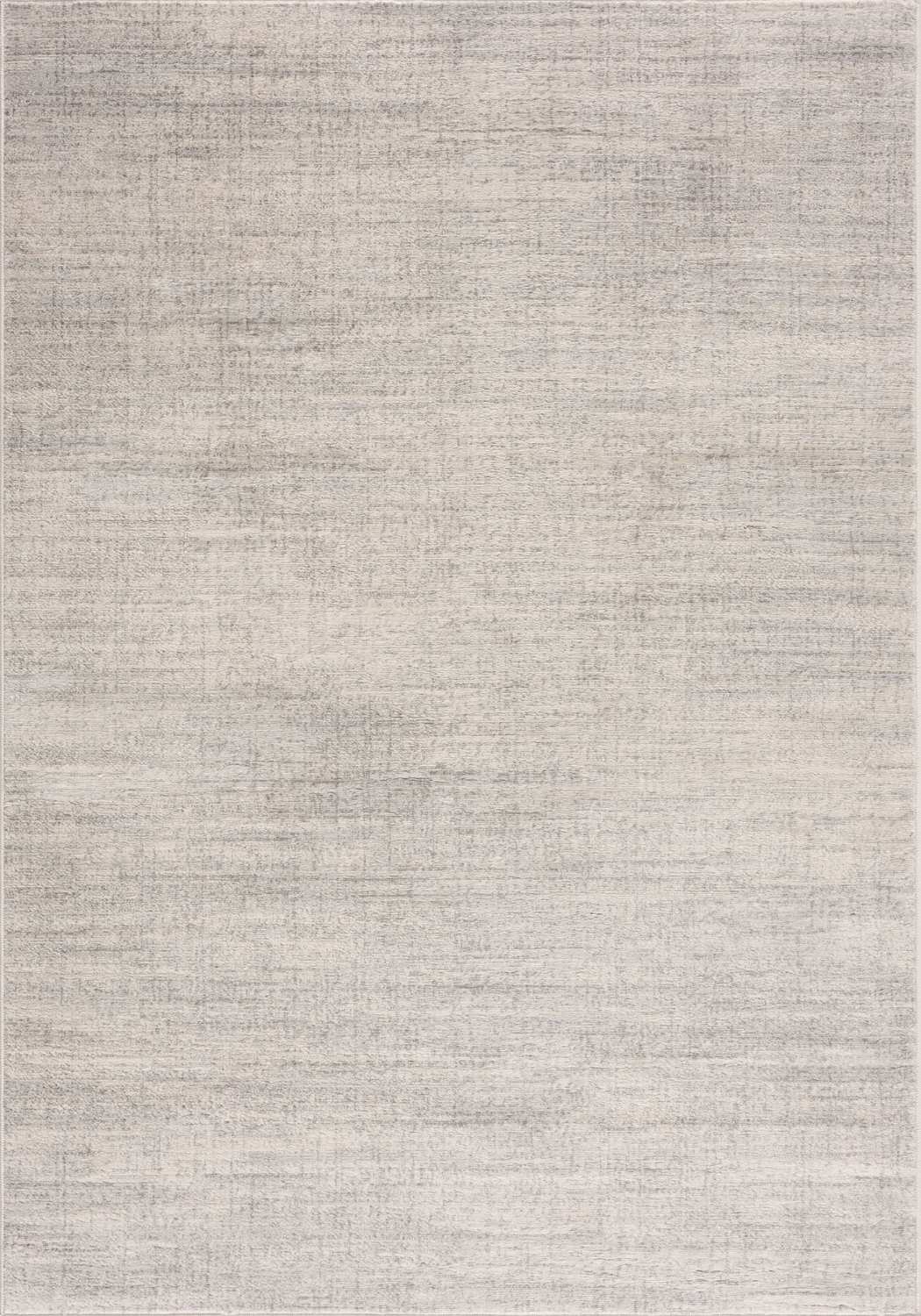
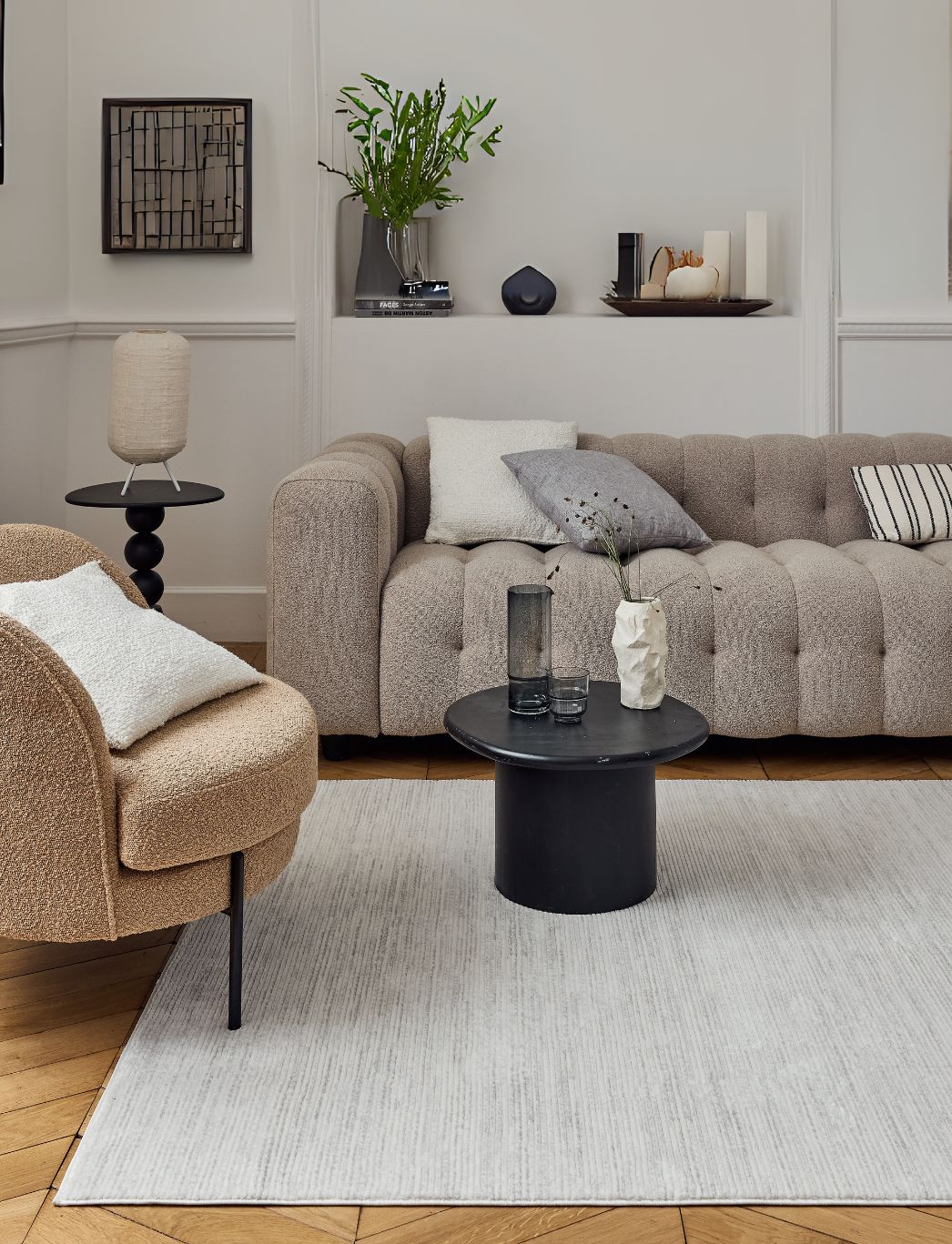
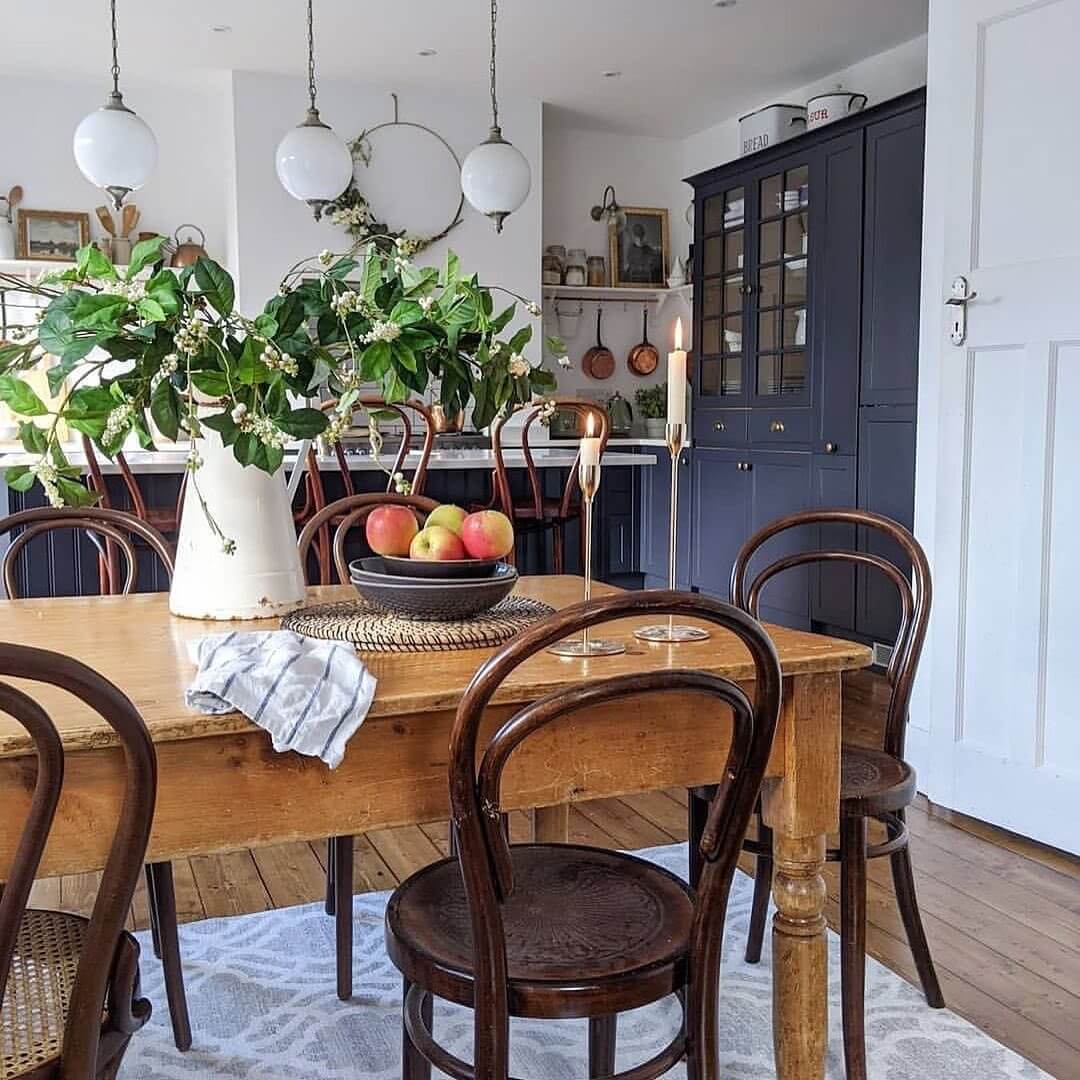
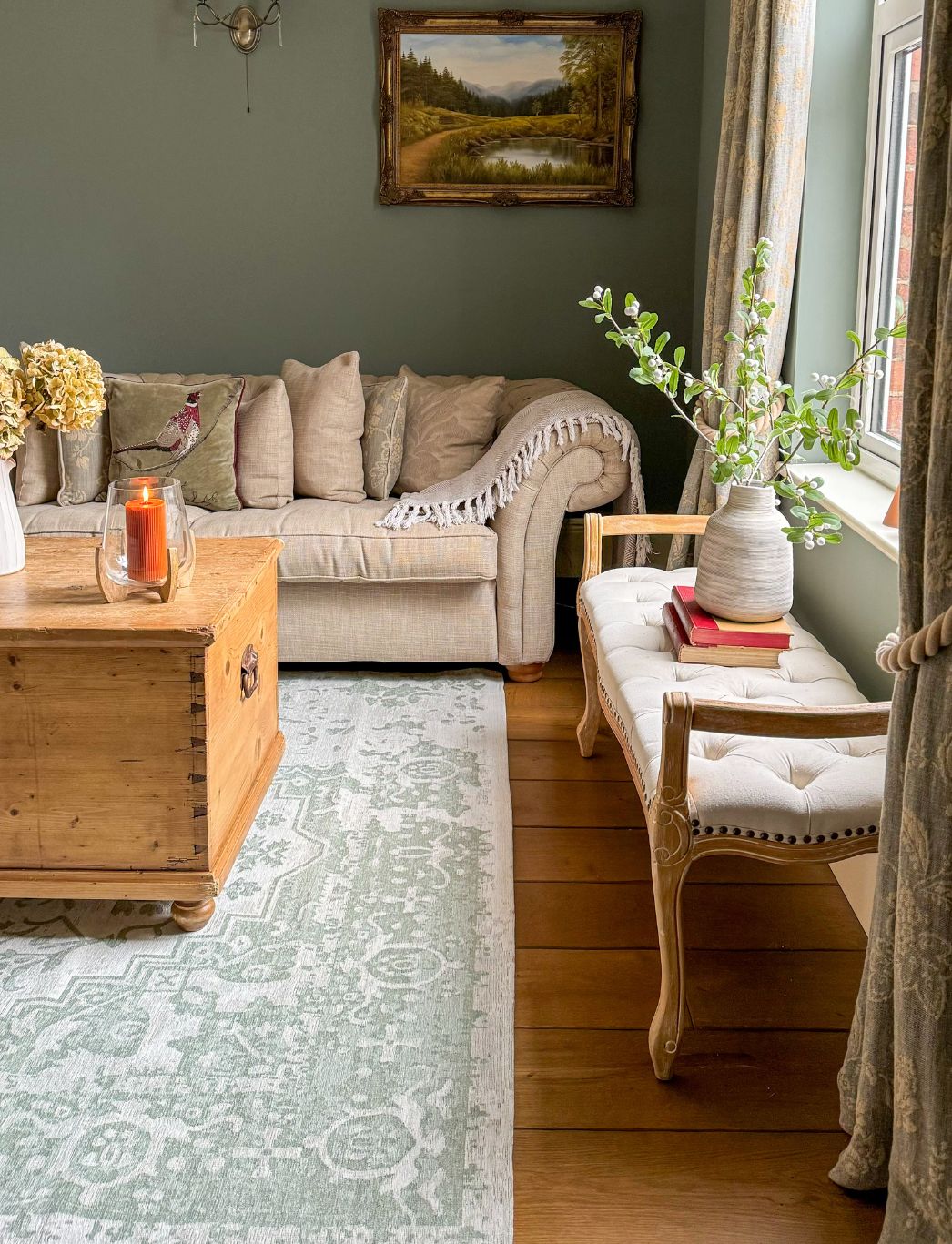
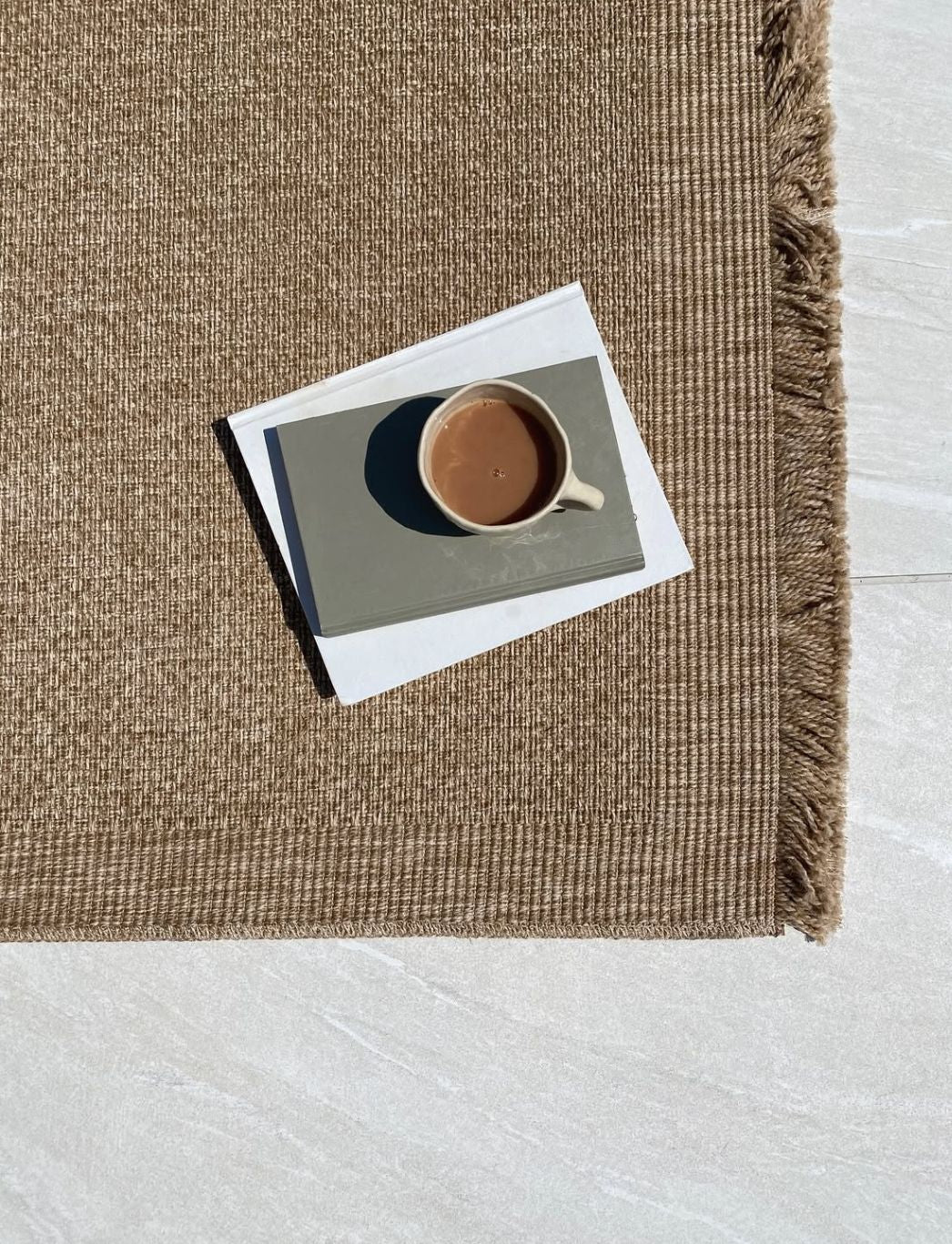
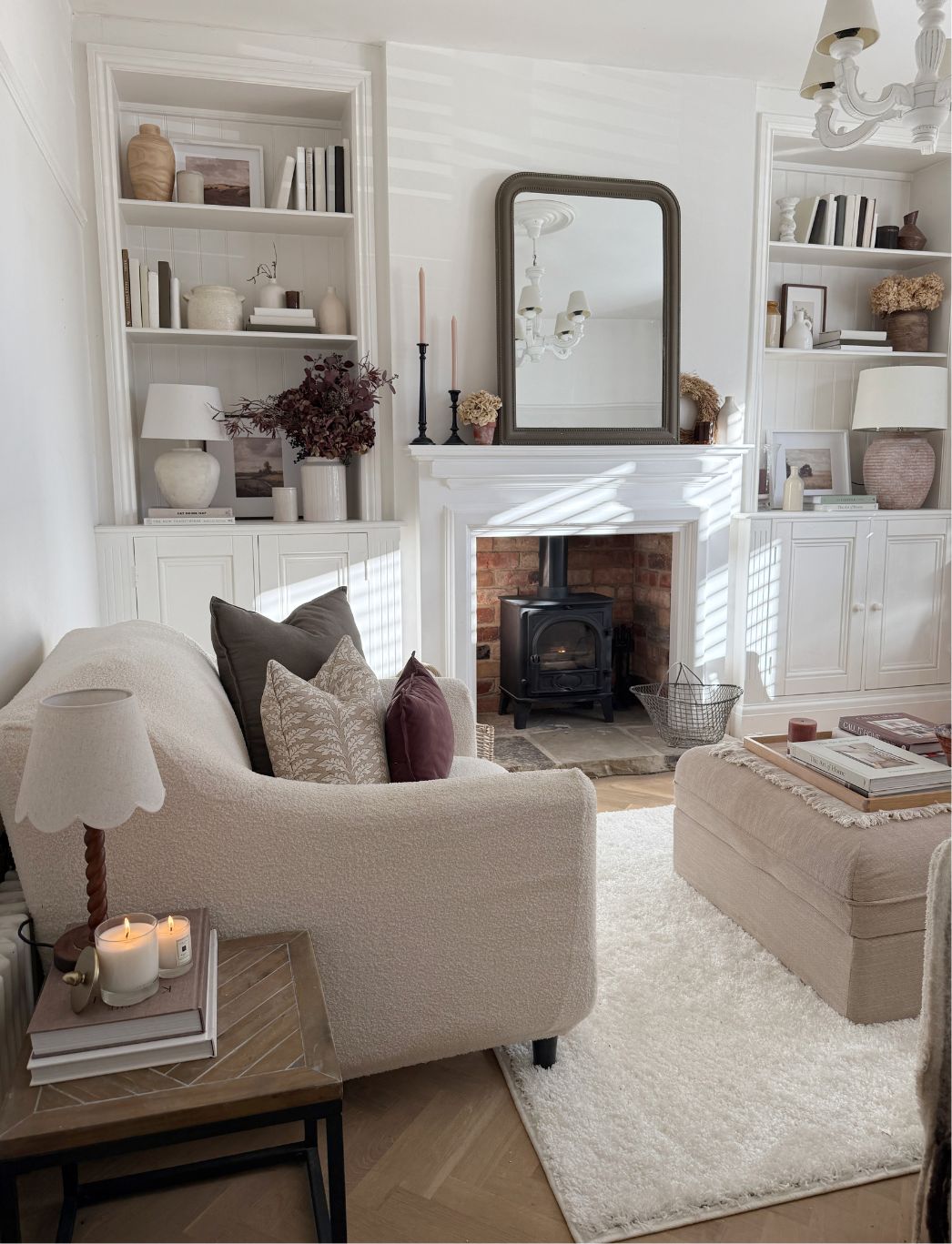
Leave a comment